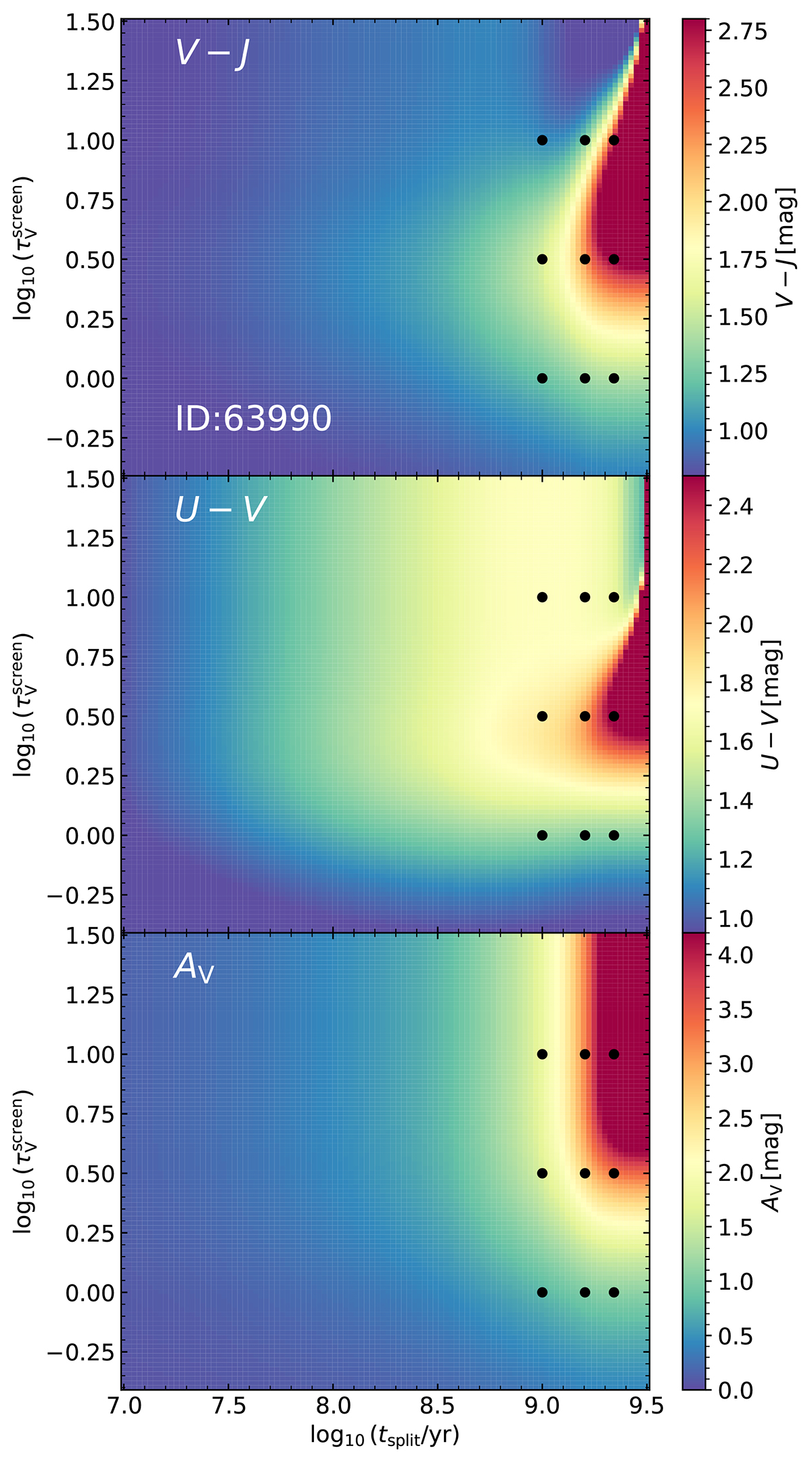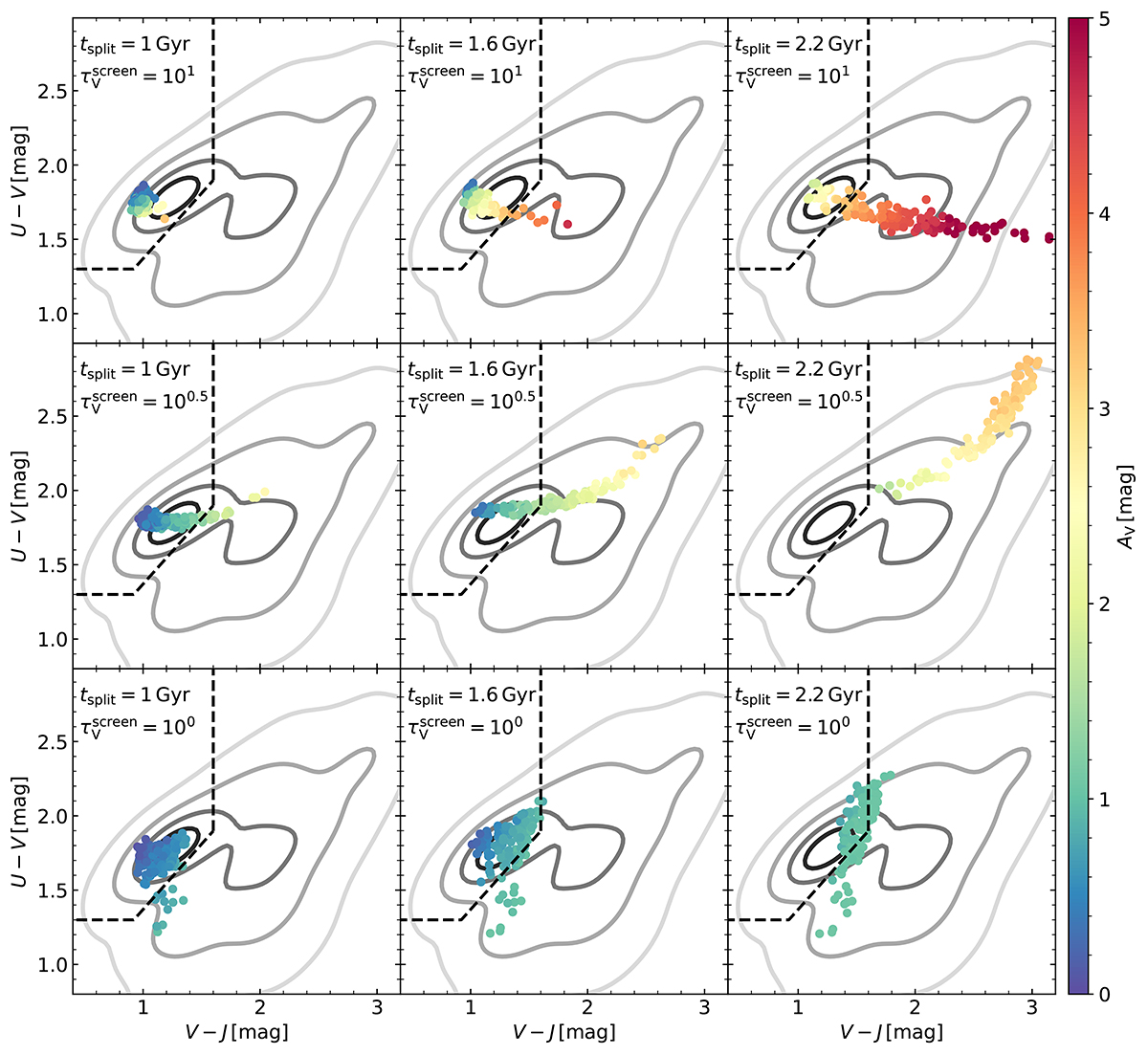Fig. 8.

Download original image
Application of the two-component dust attenuation toy model to a single TNG100 galaxy (subhalo ID: 63990, M⋆ ≈ 1011.2 M⊙, SFR ≈ 140 M⊙yr−1). Shown are the V − J color (upper panel), U − V color (center panel), and V-band attenuation (lower panel) as a function of the two parameters of the toy model: tsplit, which denotes the age up to which stellar populations are attenuated, and τVscreen, which denotes the V-band optical depth of the dust screens. The black dots mark the (tsplit, τVscreen) combinations that we selected to visualize in Fig. 9. To reach the very red V − J colors observed for massive, star-forming galaxies, the stellar populations of this TNG100 galaxy need to be dust-obscured at least up to t⋆ ∼ 1 Gyr.
Fig. 9.
Results of our toy model for TNG100 galaxies with two-component dust attenuation. We show the UVJ diagram of massive, star-forming TNG100 galaxies for various combinations of the free parameters tsplit and τVscreen in our toy model. The color-coding corresponds to the V-band attenuation for the TNG100 galaxies. We show the observational JWST/NIRCam data for massive (M⋆ > 1011 M⊙) galaxies as grey contours. The toy model in the center of the figure with dust screns of intermediate optical depths (τVscreen ≈ 3.2) covering all stellar populations up to an age of tsplit = 1.6 Gyr provides the best match to the observational constraints.


Current usage metrics show cumulative count of Article Views (full-text article views including HTML views, PDF and ePub downloads, according to the available data) and Abstracts Views on Vision4Press platform.
Data correspond to usage on the plateform after 2015. The current usage metrics is available 48-96 hours after online publication and is updated daily on week days.
Initial download of the metrics may take a while.


